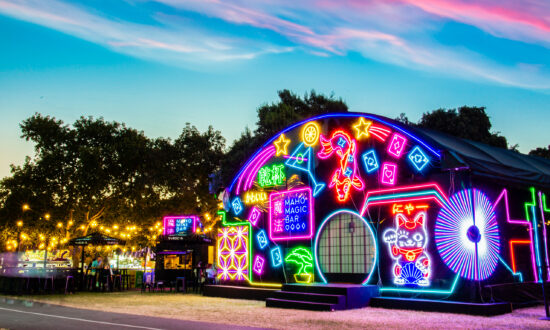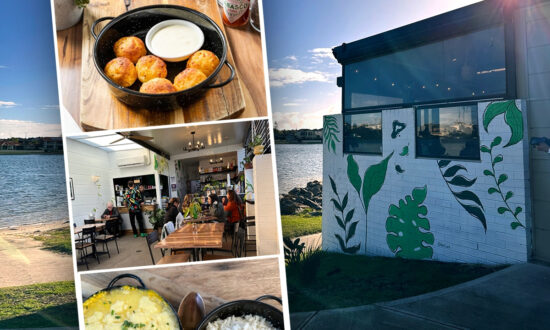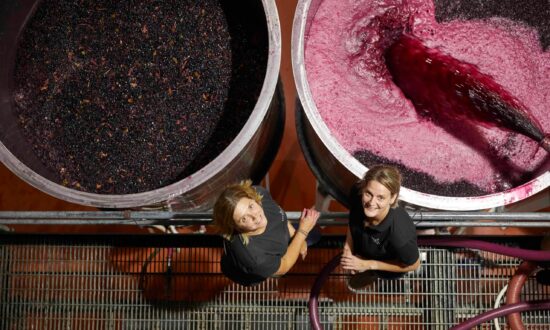What’s in a name (said Juliet to Romeo)?
Shakespeare’s famous play was set in Verona and if the couple were there today, they might just take a refreshing little sip of Prosecco, made nearby, to soothe their troubled affairs.
For Prosecco is the original sparkling wine of north-east Italy and, now, a global phenomenon. The young lovers are the perfect demographic for the wine. Its sales around the globe have gone nuts; in many parts of the world, it now out-ranks Champagne.
It’s also got a fair bit going for it in Australia, led out of Victoria’s King Valley. The Riverland, followed by Wrattonbully, the Adelaide Hills, and other Limestone Coast districts are its key source regions in South Australia.
Volumes and value are growing at an exciting rate. Data from Wine Australia produced by IRI MarketEdge show that 78 per cent of the Prosecco we consume here is produced domestically.
No wonder the Italian consortia of Prosecco producers have got on their high horses and are demanding that we stop calling it by the P-word. They claim, via the European Commission, that the name is a Geographical Indication – meaning it comes from a defined Italian region and the name belongs exclusively to them.
Our national winemaking authorities are arguing in international courts that this is a bit rich and this point is backed by strong historical evidence. Prosecco is, in fact, a grape variety and as such, we should be able to continue to use it on our labels.
The Italians shocked the wine world in 2009 when out of the blue they made a decree that stated Prosecco was no longer a grape variety but a GI, swearing black and blue it was never a variety even though it had been listed in their own databases as such for decades and longer. They now argue that the variety is Glera – which, you have to admit, sounds a bit like one of Cinderella’s sisters.
The Italian mob have already pushed through their protection of the P-name in many countries like Canada, South Africa, Chile, and Vietnam, while the US has more complex arrangements in place.
It’s all rather messy and infuriating, according to Wine Australia’s Head of ESG and Market Access, Adelaide-based Rachel Triggs.
“There’s a large amount of scaremongering in overseas markets, protecting it in legal ways as well as pressuring importers and distributors,” Triggs says.
“It’s fair to say the consortia are closing in across the globe, and they are very well organised and very well funded.”

Peta Baverstock loves her Prosecco grapes, which are friendly to grow in the right South Australian regions. Supplied image
And they’re certainly coming to get our producers. Just this year New Zealand authorities buckled and gave the Italians their way, which included a five-year warning that Australian-made Prosecco would need to be renamed according to the Kiwis’ Free Trade Agreement with the EU.
To be totally honest it’s not looking good, certainly for our exporting Prosecco producers. We might have a chance domestically but watch this space. Our Department of Foreign Affairs is expecting an in-principle agreement with the EU to be tabled in 2023, in which there’ll be all sorts of details about European place names associated with food and wine products, including cheeses, meats and wines. (We already are banned from using the terms Port, Tokay, Sherry and Champagne.)
Which brings us back to the pleasure bubbles that are Prosecco and its fabulous producers in SA.
One thing is certain – Prosecco is on the upturn in terms of popularity, with consumers loving it and more and more growers and winemakers getting onto it as well.
Unlike the naming debate, it’s an easy-going grape to grow and it’s much the same in the winemaking department, according to Peta Baverstock, a much-admired sparkling genius from the state’s South East Limestone Coast zone. She sources hers, under her Cuvee-Co banner, from a vineyard in the Mundulla district.
“I actually call it the ‘fuss-free sparkling’ in my range,” Baverstock says. “The grapes themselves are beautiful on the vine to pick, it crops really well, and compared to bottle fermentation sparklings, the winemaking is relatively easy.”
A quick tutorial on how Prosecco winemaking works. The base wine is made much the same as other white wine varieties, and can be treated very simply, or given a little extra complexity with some barrel settling on its spent yeast lees. To get the bubbles, instead of a second fermentation in the bottle, which is known as “Methode-Traditionelle”, Prosecco, and cheaper sparkling wines from other varieties, are put into a pressurised tank to go through their second, fizz-creating phase, before being chilled, filtered, and bottled under pressure.
This production technique is known as the Charmat method. Its simple process suits the end product which is a relatively uncomplicated style of sparkling wine. This is a major part of its appeal, and also a key reason why it’s much cheaper than bottle-fermented sparklings and Champagnes.
Price accessibility and friendly, easy-drinking enjoyment also have resulted in a strong following for Artwine’s Prosecco, from the Woodside district of the Adelaide Hills, according to co-proprietor Judy Kelly.
“Part of it is the cost, and it’s very on trend, here and in Europe and the UK,” Kelly says. “It just seems to be approachable for a lot of people who can’t cope with yeasty sparklings like Champagne.
“Prosecco is bright, fresh and simple and very likeable with broad appeal.
“I call it a verandah wine. You don’t need to think about it too much: it’s easy-drinking and great with casual food.”

Kate Hortsmann and Greg Clack from XO Wine Co made Prosecco from Langhorne Creek fruit this year. Supplied image
Artwine has had Prosecco in the ground since 2012, and planted more in the past few years. They now also make a Rosa style, recognising the trend for pink wines, with a little dosage of Pinot Noir.
In the Hills generally, Prosecco production has close to doubled since 2015. It loves the cooler climate there, Kelly says.
“It’s just very happy here. It’s a happy vine.”
This seems to be the case in cooler, continental-style climate areas, though it also is thriving in the Riverland with producers like Ricca Terra focusing on it.
It also has a small presence in Langhorne Creek, where XO Wines’ Greg Clack and Kate Horstmann went as part of the region’s Project 5255 project, which invites annually three new winemakers to come into the region to make their first wine from there, gifting them fruit for the novel experience.
In 2022, XO’s effort was a Prosecco from fruit via Barry Featherston and Heather Webster’s Windsong Wines Vineyard, who also make their own in a traditional-method style.
While Prosecco may sit outside Langhorne Creek’s usual red-focused reputation, it gave Clack and Horstmann the opportunity to tie in a wine that suited their portfolio which includes other Italian varieties like Fiano, Barbera and Nebbiolo. They decided on putting a small portion in barrel to create a little texture and richness in the style, without getting too complex.
“It’s not supposed to be a super serious drink,” Clack says. “It’s supposed to be all about being enjoyable.”
Dom Torzi and Tracy Matthews of Torzi Matthews Wines in the Eden Valley also have touched on a more subtle level of complexity in their Vigna Cantina Prosecco offering. They have a decade-long experience with Prosecco at their Angaston vineyard. Theirs was the first in the Barossa and, as far as Torzi knows, it’s still the only one. Production has doubled in the time they have been making it.
“Ours is a more serious style when it comes to Prosecco – we have it after as well as before dinner, just to cleanse the palate,” Torzi says. He makes his with a little more texture and palate presence than many others, and it’s quite dry in style.
Cannily, aware of the potential for Italian producers to push their case, he registered in 2014 the variety and style name Secco di Glera. We’ll see many variations on that theme, no doubt, once the EU gets tough.
Anita Goode of Wangolina at Mount Benson in the Limestone Coast says she’ll probably follow what the rest of the Australian wine industry does when push comes to shove.
“We have great leaders in the Prosecco space, especially in the King Valley in Victoria, who will be able and have a marketing nous to be able to figure out that Sparkling Glera will work for us,” Goode says. “I can’t see it not working with the right consumer education behind it.”
Wangolina’s Birds of a Feather Prosecco, also sourced in collaboration with Peta Baverstock from the Wirrega Vineyard in Mundulla, follows the crunchy, refreshing route that has wide appeal and offers great quality/value in the mid $20 range compared to many other sparkling wines made from more traditional varieties like Chardonnay and Pinot Noir.
“For me, Prosecco is a good fun drink, with a lightness and a vibrancy about it – it’s got to be crisp and clean and salivating and delicious,” Goode says.
“It’s a wine you can share at a party, in the lead-up to dinner or down the beach or at a wedding. It’s that sort of feel, a social drink. It’s a convivial wine.”
Peta Baverstock agrees: “It’s all about our lifestyle – and we’re learning and accepting how we can enjoy wines like Prosecco and when and where it’s best suited.”
It’s a simple, friendly, outdoorsy kind of wine, she says.
“A simple pleasure. And if we have to change the name, we’ll do it in an Aussie way and make it our own,” she says. “We’re always up for a challenge.”
“What’s in a name,” said Juliet. “That which we call a rose/ By any other name would smell as sweet.”
TASTING NOTES

XO Wine Co Prosecco 2022
Langhorne Creek / 11.5% / $27
A single vineyard creation under the Langhorne Creek Winemakers Project 5255 scheme which selects three producers to make their first-ever wine from the region. From the Windsong Wines vineyard, this is a tasty refreshing and tangy little number with just enough body weight and light chalkiness to suggest a little bit of oak and yeast lees encouragement in the winemaking, Flavour-wise, think limes, pears and subtle bathroom talc palate aromas.
Cuvee-Co Ada’s Prosecco 2022
Limestone Coast / 10.5% / $30
The “Queen of Sparkling” in SA’s South East, Peta Baverstock has created a delicious, cooling fizz, tingly and refreshing as an attractive aperitif – a wine you can drink from afternoon to bedtime, if that’s your want. With familiar lemon and apple notes, the winemaker describes a further floral sense as a “mimosa flower” which translates perhaps as a whiff of wattle and native bush. Flavours reminiscent of lemon sherbet.
Artwine Prosecco Bianca 2021
Adelaide Hills / 11% / $27
From early Prosecco adopters Judy and Glen Kelly, this is a more “adult” style than many others, very dry with a touch of tonic bitters in the flavour spectrum, almost Salvital-like with saline notes as well, even white pepper suggestions. Salivating refreshment guaranteed. They also make a Prosecco Rosa 2021 which has a tiny dash of Pinot Noir added to create a very pale blush with subtle red berry and rose petal flavours and a similar dry finish like its Bianca sibling.
Wangolina “Birds of a Feather” Prosecco 2022
Limestone Coast / 10.5% / $25
Made in collaboration with Peta Baverstock of Cuvee-Co – hence the birds of a feather reference. There’s a gorgeous apple, lemon gelati thing going on here, a genuine fruit-flavour expression that even extends to a note of green melon. Simply refreshing with good palate crunch and an enticing, moreish tickle of acidity in the finish.
Vigna Cantina Prosecco 2021
Barossa / 12% / $28
Dom Torzi and Tracy Matthews (Torzi Matthews Wines) tap into their estate vineyard for this – they’ve been making Vigna Cantina Prosecco as a single vintage wine for 10 years, and developed a style that shows more complex characters than many others, a result of some time spent on its spent yeast lees to develop a subtle plushness in the mouth-feels. Saline notes to begin then lovely crisp fruits in the palate, lemon and apple as a classic combo with the faintest of bitter lemon senses in the finish. Texture and flavour on song.
Support local arts journalism
Your support will help us continue the important work of InReview in publishing free professional journalism that celebrates, interrogates and amplifies arts and culture in South Australia.
Donate Here




